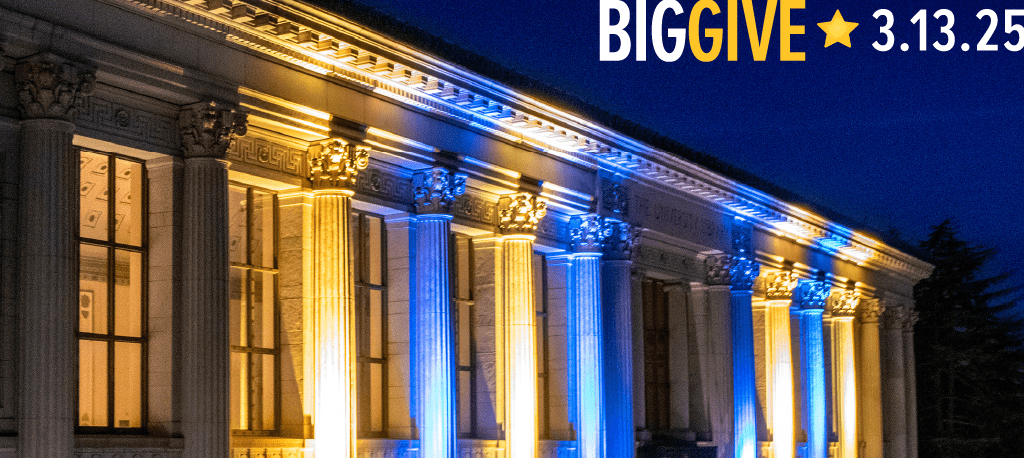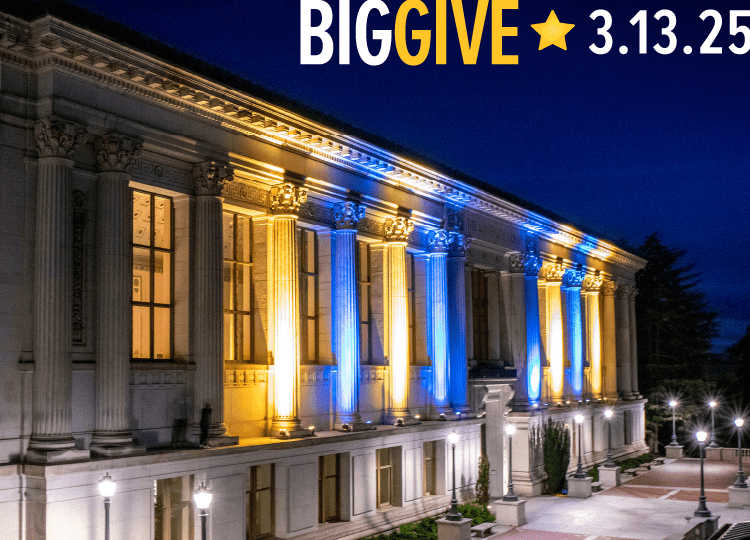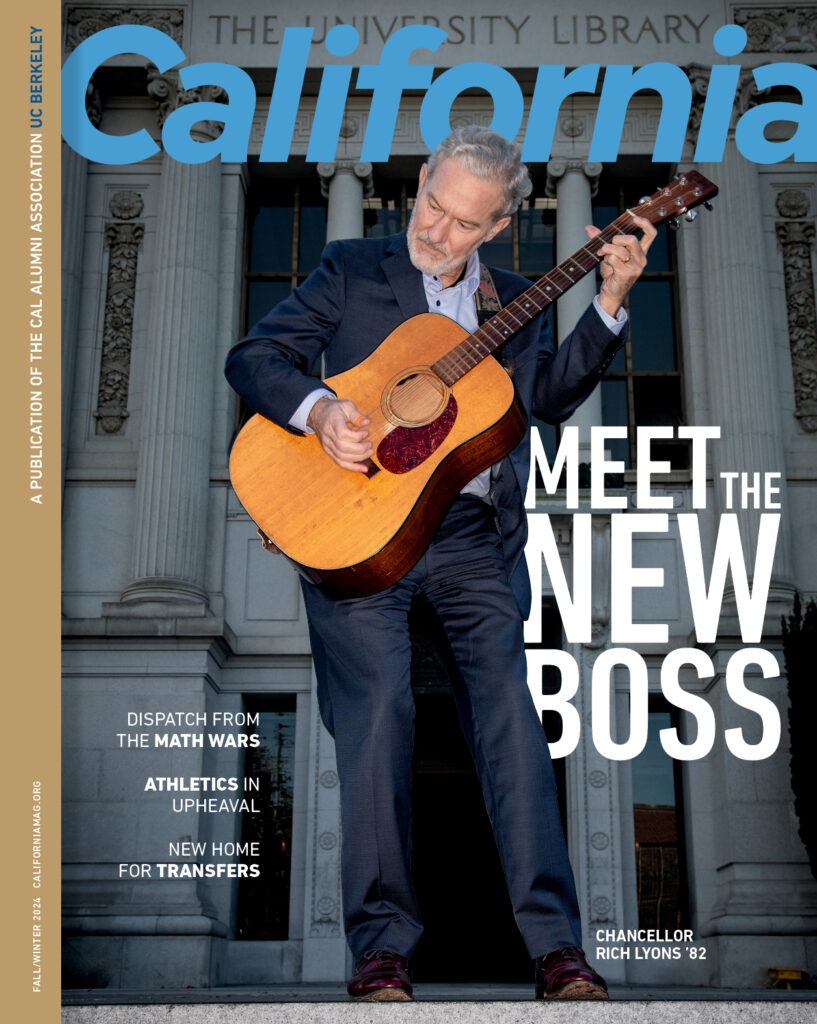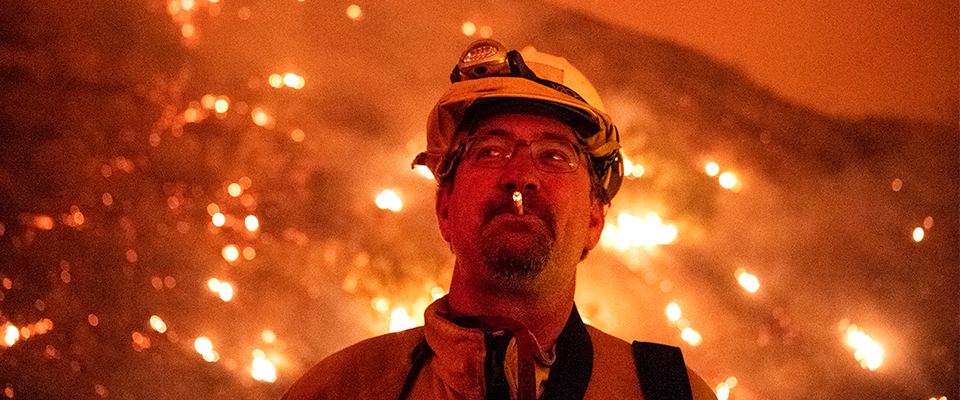Noah Berger admits he wasn’t the most diligent student when he attended UC Berkeley back in the early 1990s. He simply didn’t feel cut out for academe. In fact, there was only one thing that really engaged his interest during his freshman year in 1992: taking photographs for the Daily Californian.
Berger dropped out of Cal in 1995, but his passion for photography remained. For the past 24 years, he has been working as a freelance photographer, gaining widespread recognition for both his corporate and news work. He has long been considered a gifted utility shooter who can take images of a corporate CEO sitting serenely at his desk one day and gritty crime scenes the next.
But over the past few years he has gained particular renown for his wildfire images. The Rim Fire, the Valley Fire, the North Bay Complex Fires—Berger has shot them all, delivering powerful photos of devastation, chaos, hope, and heroism.
With Associated Press staff photographer John Locher and freelance photographer Ringo Chiu, Berger was a finalist in the breaking news photo category for the 2019 Pulitzer Prize. California recently interviewed him on his career and craft.
First, congratulations on the Pulitzer nomination. When did you first determine that you wanted to pursue photography professionally?
I had taken one class in photography in high school—that was the extent of my training. On the day I showed up at the Daily Californian, a protestor [Rosebud Denovo] broke into the Chancellor’s house with a machete and was shot and killed by police. So I was sent to cover that. And the day after that there were protests—riots, really—on the streets because of the shooting, and I covered that as well. It was incredibly exciting, plus I made $130 from the photos, and that got me juiced. I dropped out of school by 1995 and never looked back. I began freelancing for the Berkeley Voice. I had a darkroom in there, and I interned at the ANG [Alameda News Group] papers. And I’ve just stayed at it. I do a lot of corporate work because that pays the bills, but I really love covering breaking news. I’ve also done a lot of work for the university—UC public affairs, Haas, also the Cal Alumni Association.

Have wildfires always been part of your portfolio?
I’d covered some big fires in San Diego, but what really did it for me was the Rim Fire in Yosemite in 2013. It was just such a gigantic, devastating fire, and the images were so incredible. I was partnering at that time with a fellow photographer, Justin Sullivan, and we pretty much decided right then that this is what we wanted to do with our summers. But I wanted to do it without a lot of finessing, without getting second-guessed. I didn’t want a lot of editorial control. I want to be the one who determines where to go and what to shoot. So I’m really happy that I have a great editor now at Associated Press. She basically just lets me use my judgment, to go when and where I want.
So, at this point your work is divided evenly between corporate and news photography?
Well, the corporate shooting is how I mostly make a living. I actually lose money, thousands of dollars, every fire season because I have to give up corporate jobs. News and wildfire work pays around 10-20 percent of corporate rates. But covering wildfires is important to me. And I’m lucky my corporate clients understand that. They may not be thrilled when I have to drop everything and head out to a fire, but they’ve been very supportive, very understanding. And for my part, I’m flexible with them. If they suddenly have to cancel a scheduled shoot, for example, I don’t charge them.
Is it difficult to jump from one mode to another—corporate to wildfire and vice versa?
It can be hard to adjust. I remember covering a Dreamforce sales convention one time and it seemed a little inconsequential. Or it can be hard when a corporate client asks if I’m getting good pictures and, because I tend to be honest when asked a question, I’ll answer to the effect, “Sure, for what it is.”

What’s the most important quality for a wildfire photographer?
Good wildfire fighters really have a passion for wildfire. And if you’re photographing wildfire and wildfire fighters, you have to have the same thing. I felt that on the Rim Fire, and I think my passion grows with each fire season.
What about dealing with firefighters?
As a photographer, it’s extremely important to build trust with firefighters, but it’s really not that hard. You have to do something pretty stupid to destroy that trust, though that does happen. You need to be prepared so you’re not a burden—that means full Nomex [fire-resistant clothing] and any other gear you’ll need. If you show up in jeans and street shoes, you mark yourself as a potential problem. You really have to consider what’s in your kit. You also have to remember that photographers and reporters are, at best, third priorities for firefighters and emergency responders. Their first is maintaining their own safety. The second is evacuating residents. So you’re after that, a distant third.
You really have to push hard on fires, of course. You’re always stressed about getting the shot and filing on time. But you can’t get in the way of the actual firefighting. I always make sure that I pull over whenever I see any [emergency response] vehicles, and I always park my car out of the way with the key in the ignition. That helps establish trust. I’ve only had one or two incidents that I can recall where some firefighters were angry at me, where they said some hateful things. And that wasn’t because I had done anything—it was just because they identified me as “the media.” I’m in a firefighter Facebook group and I contribute to it, and you see some strong criticism of the media there, and I agree with a fair amount of it. It’s really frustrating when a reporter gets something wrong, or an editor sitting at a desk miles away decides to rewrite something without knowing the facts on the ground. So I have developed strong relationships, even friendships, with quite a few of these guys. They ask me if they can buy any photos that they’re in, and I’ll always send some to them for free. It’s not a calculated thing, it’s not essential to doing the job, but it’s something I feel compelled to do.

You mentioned the importance of your kit. What’s in your go bag?
It becomes more involved, more sophisticated every year. I have full Nomex, goggles, gloves and hardhat, of course. I added a pair of really good [radio] scanners last year. When I first started covering fires, I used to listen to music—and I had no idea what was going on, where the activity was, where you could get the shots. So now I just listen to the scanners. I also got a carbon monoxide detector for my car. A lot of times you’re sleeping in your car near the fire line with your engine going to run the air conditioner to filter out the smoke. And it occurred to me that if you have a leak anywhere in the exhaust system, you could die.
And this year, I went in with some of the other photographers I roll with for some really powerful two-way radios. That helps us out with both work and safety. Also this year I bought a freezer for my garage. That lets me freeze five gallons or so of Gatorade at a time. When there’s a fire, I just stick the frozen Gatorade in my cooler and take off, and I have cold drinks for days. That can make a big difference.
Do you have any anecdotes that speak to the character of wildfire fighters?
I can think of quite a few, but one sticks out. I was on the Wall Fire outside Oroville [in 2017], and I was watching the fire steadily advance toward this house. There was no one around, no crews, and it seemed certain the house was going to go up. I figured it had maybe 30 minutes. Then this lone firefighter showed up. He looked at the situation and calmly scratched a fire line around the house with his shovel, putting out some spot fires. And that was enough to save the house. Then he came up to me and asked if I knew where we were—he wasn’t completely sure of the location—and I told him, and he walked down the hill.

Clearly, wildfires are dangerous work environments. Have you ever felt your life was at risk?
Not really. I know fire behavior pretty well by now. There have been lots of moments when you think, “In two minutes I really don’t want to be around here, it’s going to be bad,” but I’ve never feared deeply for my life. I always leave my car running when I stop to take shots, and I keep an extra key under the chassis. And I typically travel in two-car teams, with two photographers in each car. It just makes for better navigation and a better safety margin. The main thing that concerns me is falling trees. They can injure you directly or fall across a road, blocking your exit.
You’ve taken thousands of photos of wildfires. Virtually all of them are dramatic and moving. But do you have a personal favorite?
I think one of my best images came from the Delta Fire [in 2018 near Lakehead, Shasta County]. I had driven small roads all day, and it was pretty much for nothing. I didn’t really have much, and I was about to leave. It was night, and when I got to I-5, crews were working near the highway burning out fuels, and it had gotten somewhat out of control and they were containing that, and I got shots of clouds of embers flying over one of the firefighters. I really like that shot—and it was a fluke.

Increases in the number and severity of wildfires have been linked to climate change. You’re not a scientist, of course, but do you ever get a sense of the planet approaching a tipping point when you’re covering fires?
When I covered it, I didn’t see how things could get much worse than the Rim Fire. But then the Valley Fire in Lake County upped things a notch—it burned so many homes so fast. And then came the North Bay fires in 2017 and the photographers were all saying there’ll never be anything like this again in our lifetimes. But then we had the Camp Fire. It seems like we’ve hit a new mark every year over the past six years.
When you cover wildfire, you also cover human loss and misery. Have there been any moments that were particularly difficult for you?
At one point in the Camp Fire, we were allowed to accompany crews on body recovery. That was unusual—emergency responders typically make you keep your distance on that kind of thing. And that was pretty tough, but it’s part of your job, and you handle it.
But what really got to me—what still makes me get teary when I think of it—was this time on the Valley Fire. [Pause, and voice catches] There was a whole street where everything was leveled, there wasn’t a house standing. And somebody had put out a sign that said, “Thank you, firefighters—we know you tried.” The fact that people who had lost everything, who were at the lowest and saddest point of their lives, could still find it in them to write a sign like that—that display of humanity, thanking people who tried to help them—it got to me. It still gets to me.



















